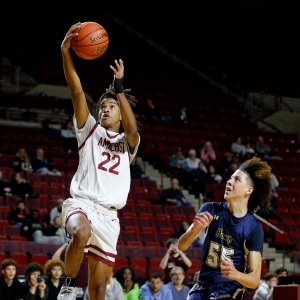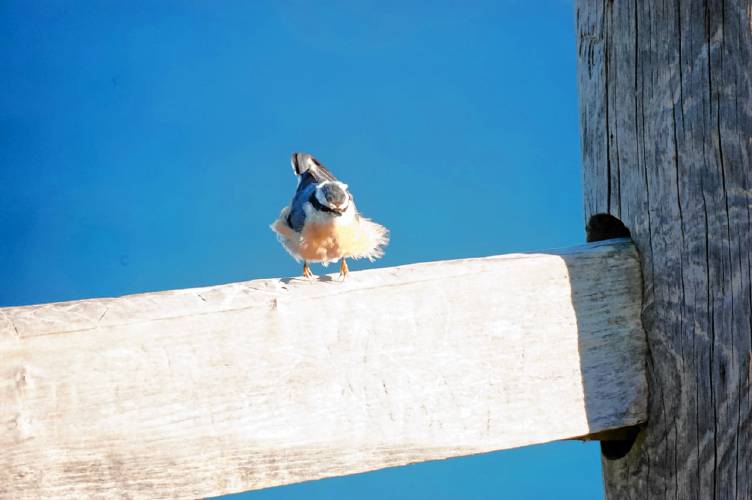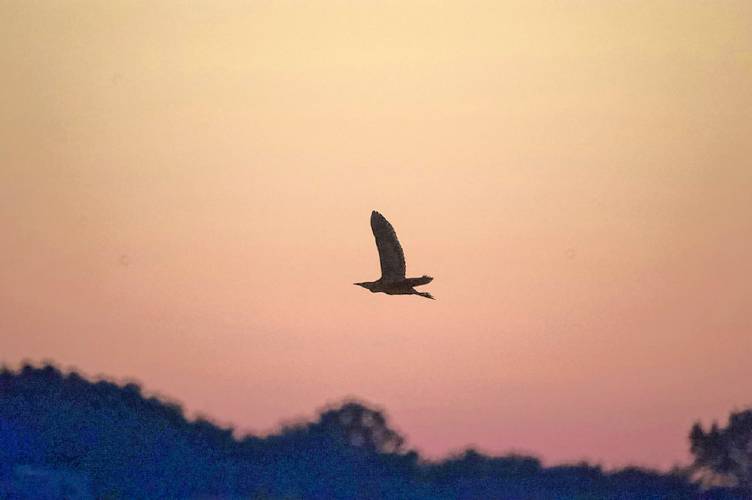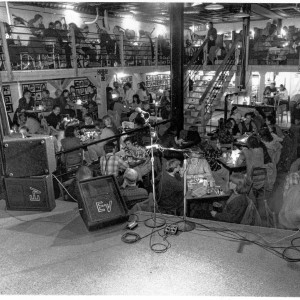Earth Matters: From Big Sits to Birdathons: Birding competitions far and near
| Published: 04-18-2024 1:46 PM |
A few months ago, headlines flared that Peter Kaestner had seen his 10,000th bird species. This could have been anticlimactic, as Kaestner has been renowned for years among birders for traveling worldwide and seeing more species than anyone.
However, the feat gained drama just before Kaestner’s milestone when Jason Mann, so non-renowned that few birders had ever heard of him, suddenly revealed that he, too, was approaching 10,000 species seen, and even claimed to have reached the milestone mere hours before Kaestner did. Mann ultimately was found to have padded his list a bit and withdrew his claim, but for a while, the title of world’s top birder unexpectedly became a competition.
Competitive birding dates back to at least the 1950s, when the record for most species seen in one year in the continental U.S. and Canada, after going unbeaten for over a decade, was broken by three different people between 1952 and 1956. Legendary field guide author Roger Tory Peterson led one of these record-breaking efforts, seeing 572 bird species in 1953, an achievement documented in his book, “Wild America.” This tradition of the “big year” eventually reached Hollywood: Jack Black, Owen Wilson, and Steve Martin star in “The Big Year,” a movie inspired by the three-man race to break the record in 1998. Birders using the internet and smartphones now regularly exceed 700 species in a year, some without even leaving the lower 48 states. Worldwide, at least two people have completed big years of over 6,000 species.
A big year is a birder’s marathon; our sprint is a big day. Successful big days usually require advance scouting to confirm definite locations of difficult species, mapping a route that reaches key locations at the best times, and minimizing time spent in non-birding activities like travel, eating, and using bathrooms. Teams challenging a record often bird from midnight to midnight, using the nighttime hours not only to seek owls and other nocturnal birds, but also to listen for the faint, overhead flight calls of warblers, thrushes, and other species that we see in the daytime but which migrate long distances at night. The current record for Massachusetts (unless I missed one) is 195 species, set in 2014 by a team that included University of Massachusetts Amherst alumnus Ian Davies. The biggest day of birding worldwide to date is 431 species identified by a team in Ecuador.
The ultimate birding competitions are head-to-head events. The World Series of Birding, started in 1984, features teams simultaneously attempting a big day in the birding mecca of Cape May, New Jersey. Texas, of course, had to go bigger: the Great Texas Birding Classic is headlined by a six-day-long statewide birding contest. Here in New England, we have the Super Bowl of Birding, a much colder 12-hour contest in late January in Essex County, Massachusetts, and Rockingham County, New Hampshire.
As birders have learned how carbon emissions from motor vehicles contribute to climate change, it has influenced some big days and years. In 2007, 15-year-old Malkolm Boothroyd bicycled more than 13,000 miles across North America, recording 548 species. A few years later Dorian Anderson racked up 618 species and over 17,000 miles on his bicycle. The Great Texas Birding Classic now has a “human-powered” division that allows canoes and kayaks as well as bicycles.
I’ve never attempted a big year, and have completed in only a few big days. Some of us birders prefer our competitions to be a little more relaxing. And with better refreshments. A big sit requires competitors to pick a spot, and stay there: they can only count a bird species if they see or hear it while standing within a small circle (around 17 feet diameter) centered on their spot. The event has been compared to a birders’ tailgate party. The challenge is picking a location within sight and sound range of the widest possible variety of habitats. An annual Big Sit contest was initiated in 1992 by the New Haven Bird Club, open to participants worldwide. I’ve participated from the Valley twice, recording 42 species from Winsor Dam at the Quabbin and 38 species from a rail-trail bridge between Deerfield and Turners Falls.
Many birding competitions double as fundraisers for birds. The competition in these cases is not only to see the most bird species, but to raise the most money for your cause. The birder or team asks friends, family, and other supporters to pledge a donation, usually on a per-species basis, with the proceeds to be donated to benefit birds or conservation. Mass Audubon’s Bird-a-thon is their biggest annual fundraising event, now in its 40th year; Manomet’s version is in its 45th.
Article continues after...
Yesterday's Most Read Articles
 Pro-Palestinian protesters set up encampment at UMass flagship, joining growing national movement
Pro-Palestinian protesters set up encampment at UMass flagship, joining growing national movement
 Island superintendent picked to lead Amherst-Pelham region schools
Island superintendent picked to lead Amherst-Pelham region schools
 Sole over-budget bid could doom Jones Library expansion project
Sole over-budget bid could doom Jones Library expansion project
 State fines Southampton’s ex-water chief for accepting lodging and meals at ski resort, golf outing from vendor
State fines Southampton’s ex-water chief for accepting lodging and meals at ski resort, golf outing from vendor
 Authorities ID victim in Greenfield slaying
Authorities ID victim in Greenfield slaying
 2024 Gazette Boys Basketball Player of the Year: Marcielo Aquino, Amherst
2024 Gazette Boys Basketball Player of the Year: Marcielo Aquino, Amherst
Which brings us to the Hitchcock Center for the Environment. Since the Center focuses on the whole environment rather than specializing on birds, its benefit is not a birdathon but a bioblitz, in which participants list not only bird species, but mammals, amphibians, insects, plants, mushrooms, and any other species that they find and can identify. The event is called Flora and Faunathon (previously known as Biothon), and is now in its 25th year. It’s a self-guided weekend out in nature, April 27 and 28, where we will count for a cause for Earth Day, learn more about the natural world around us, and compete for prizes. I better clean my binoculars!
Joshua Rose (he/him) is a naturalist who lives in Amherst. He is vice president of the Hampshire Bird Club, Northeast Chapter head of the Dragonfly Society of the Americas and a contributing editor of the website bugguide.net; he regularly leads programs for local nature-oriented groups.
Earth Matters has been a project of the Hitchcock Center for the Environment for 15 years. HCE’s mission is to educate and to inspire action for a healthy planet. Our Living Building and trails are open to all at 845 West St. in Amherst. To learn more, visit hitchcockcenter.org.



 Speaking of Nature: Bird of my dreams, it’s you: Spotting a White-tailed Tropicbird on our cruise in Bermuda
Speaking of Nature: Bird of my dreams, it’s you: Spotting a White-tailed Tropicbird on our cruise in Bermuda The Iron Horse rides again: The storied Northampton club will reopen at last, May 15
The Iron Horse rides again: The storied Northampton club will reopen at last, May 15 The power of poetry: U.S. Poet Laureate Ada Limón to speak at Smith College
The power of poetry: U.S. Poet Laureate Ada Limón to speak at Smith College Upon Nancy’s Floor: 33 Hawley event celebrates iconic dancers, history, and a new dance floor
Upon Nancy’s Floor: 33 Hawley event celebrates iconic dancers, history, and a new dance floor
